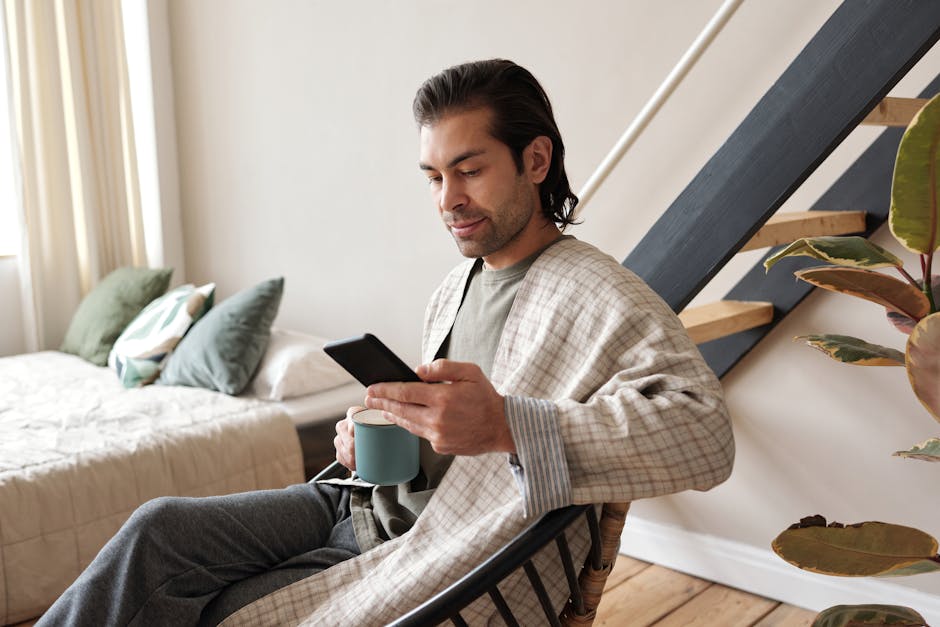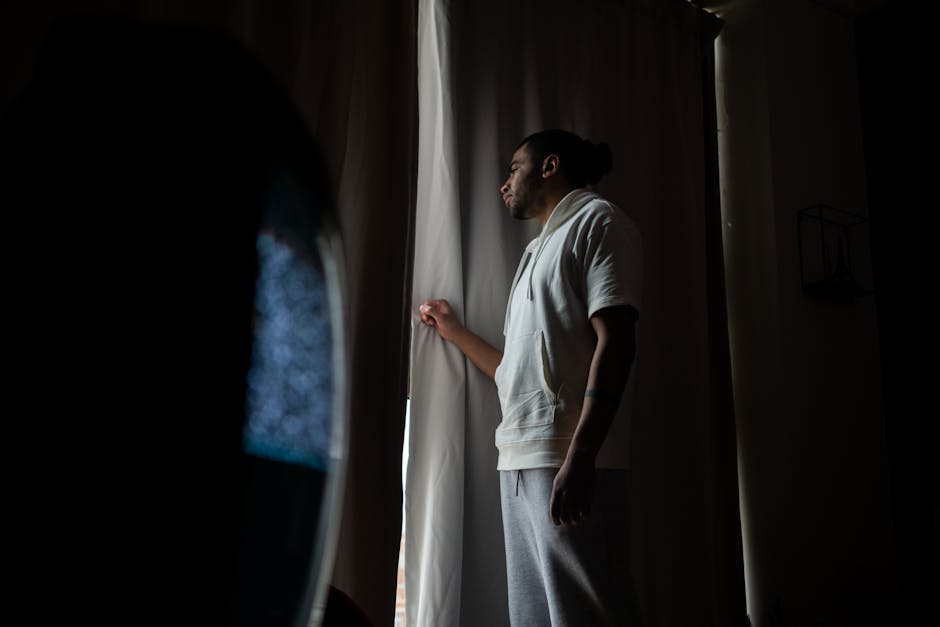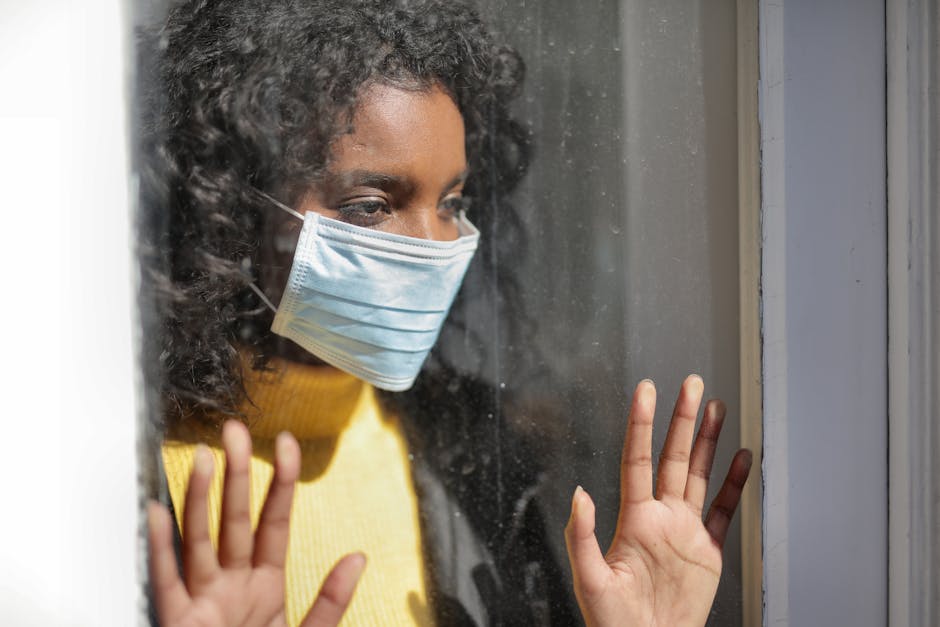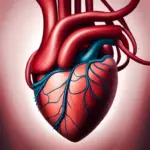Social isolation and loneliness increase the risk of death from a heart attack or stroke – Chronic stress and unhealthy behaviors can affect heart health.
Table of Contents
Psychological stress can have lasting effects on health

Even after spending time with other people, those who experience psychological distress tend to suffer more adverse physical consequences. This is what is called the “health burden of loneliness.”
In one study, for example, researchers followed up with participants from the Framingham Study (a long-running research project that began in 1948). The participants were divided into two groups — some who were lonely and some who were not. Over an average follow-up period of 9 years, there were 632 deaths among the lonely group and 401 deaths in the nonlonely group. On analysis, it was found that the lonely individuals were at greater risk of death due to all causes (145 vs 107), cardiovascular disease (CD) (89 vs. 72), neoplasms (48 vs. 31), respiratory diseases (49 vs. 39), digestive system disorders (34 vs. 25), infectious diseases (22 vs. 11), and mental illness (14 vs. 5%).
These findings held even after adjusting for age, sex, race, smoking status, body mass index, blood pressure, cholesterol level, diabetes mellitus, hypertension, or heart failure.
Another significant risk factor for poor health and death is anxiety. In fact, anxiety is a very common underlying cause of many medical conditions. Medical treatment usually fixes the problem only when the source is identified.
Social connection is more important than social isolation

Having fewer friends or family members after middle age can increase the risk of death from heart attack or stroke. But having social connections may be even more important, according to a study in JAMA Internal Medicine.
Researchers analyzed data from nearly 4,600 people between 50 and 90 years old who participated in the Look AHEAD (Action for Health in Diabetes) trial.
Participants were asked to report their level of social engagement (including work, volunteer activities, living arrangements, relationship status, intimacy with partners, and sexual activity) at baseline and every six months over 12 months.
During the trial, 94 participants died of cardiovascular events —a composite measure that included incidence of cardiac arrest, fatal and non-fatal myocardial infarction(MI), unstable angina, and cerebral vascular accident. After adjusting for possible confounding variables such as lifestyle, diet, smoking history, alcohol use, physical exercise, blood pressure, and diabetes medications, researchers found that higher levels of self-reported social engagement were significantly associated with lower death rates due to CVD.
In contrast, greater scores on a scale measuring perceived isolation and loneliness were linked to a significantly increased mortality rate from any cause, particularly from CV causes.
“Our findings suggest that interventions targeted toward enhancing social connections should be maintained through adulthood and beyond,” the authors conclude. “Furthermore, efforts to reduce perceived social isolation and loneliness should be a priority.
[wl_faceted_search]
Does money make you happy?

A wealthy society often means more opportunities for abundance and comfort. But is wealth also tied to greater happiness?
Studies have found that higher-income people tend to report greater subjective well-being.
But research has also shown that richer countries can be worse off regarding overall health and life expectancy. This suggests that achieving sustainable societies and environments may not lead to an improved quality of life.
Another study conducted over two years found no link between income and general satisfaction despite observations that affluent Westerners experience more stress and mental illness than earlier generations.
Other studies have demonstrated that socioeconomic status is linked to self-rated health, including ratings of perceived pain and psychological factors such as mood.
Thus, living in a rich environment does not automatically mean feeling enriched or blissful. It all depends on one’s attitude toward wealth and his/her ability to maintain healthy stress levels through lifestyle choices and social interaction.
Spend time with people that make you happy

Researchers interviewed more than 15,000 adults about their social connections. They found that individuals who felt isolated or lonely were two times as likely to have died from heart disease and six times as likely to have died from strokes.
These results held even after researchers adjusted for age, sex, race, weight, physical activity, income, and education.
But don’t worry just yet! It still depends on your overall health. If you are already suffering from a chronic condition like diabetes, then keep moving to maintain your health.
Limit your time on online social networks

More than two hours per day watching television or using computers and smartphones to surf the internet can increase a person’s risk of dying from cardiovascular (heart) disease or stroke.
And that doesn’t include all the other health risks of too much screen time.
These include greater obesity, lower rates of aerobic fitness, more anxiety and sleep issues, among others.
Clearly, limiting digital media use is one way to reduce stress and improve overall health. But it’s not always easy, so you should start now.
Here are some strategies for reducing smartphone usage :
Use the phone less often. I know you want to contact someone immediately when they call or text you, but don’t. Give yourself a deadline—such as once a week—then limit your usage to twice weekly.
When you do need to reach him or her, make it quick. And then hang up as quickly as possible.
Turn off notifications. It may seem obvious, but going into the app without checking for messages or calls could keep you out of trouble long-term. Who wants to spend time in a dangerous situation because you didn’t check your phone soon enough?
Create rules about how you handle tech devices. Don’t let them take over your life –– set time limits and stick to them.
Talk to friends and family

It’s not very “lonely” to be alone. Social isolation means no one else is around to talk to you or spend time with you. When you are lonely, you can get emotional and sad.
This can cause pain in your heart and make it more likely that you will have another cardiovascular disease (CVD) event such as a stroke or heart attack.
It can also contribute to depression, which, if untreated, can lead to additional health issues. To avoid these complications, spend at least five minutes talking to people about non-work-related topics daily.
You could call someone close to you, or maybe go out for a walk and start a conversation over coffee. Or you could meet once weekly to play games or do community activities together.
The most important thing is to remove yourself from the situation for some time. Like any other bad habit, going too long without talking to people may damage your health.
Learn to do massage

More than two million Americans have chronic obstructive pulmonary disease (COPD), which includes emphysema and asthma. However, only 113,000 learn how to perform massages. This is because it is difficult and time-consuming
A series of 10–12 sessions takes approximately 45 minutes per session. Participants are advised to relax each muscle group for 20 seconds. The order in which different muscle groups are relaxed depends on their needs.
These need not be consecutive days or sessions– they can be divided at your convenience. Feeling tired or sore after doing this exercise? Then take it easy for another day or go back to it later.
The benefits include reduced pain and improved mood. Also, learning this skill gives you more control over your body and feelings of empowerment.,.
It is also cost-effective as compared to going to a doctor’s office every other week for treatments. Massage costs around $60 an hour. For a total treatment of just under 90 hours, you will pay about $675, including transportation.
Go out dancing

People whose daily life includes exercise and other forms of active behavior have lower risk of cardiac arrest and death from cardiovascular disease than people who are not active
The overall fitness level and the amount of time spent exercising per week are inverse to cardiac mortality rates.
As your cardio capability increases or the amount you spend exercising rises, your vascular (heart) health improves.
Researchers haven’t found the same benefits for respiratory function or total mortality rates. But they do believe that any type of regular physical activity is beneficial for your heart.
So try to be more active! Walk or swim some days, go bowling or play tennis or golf games others.
Consider buying a bicycle and riding it every day. If you can’t ride, walk around the block or use the stairs instead.
Whatever you choose to do, do it actively. Sit down and read a book? Not anymore. Read online or get off the couch and check out a movie.
Being active helps keep you healthy in addition to helping increase your confidence and quality of life. Plus, everyone looks better walking around the house.
Doctors generally agree that women should strive to engage in at least 150 minutes of moderate-intensity exercises throughout the week plus twice as much aerobic activity before adding in additional stressors.
These might include weight training or yoga classes, dance lessons, mountain biking, or swimming.
Join a sports league
According to research in the British Medical Journal, people who are socially isolated are at greater risk for death from heart disease and stroke.
Being active is one important way to reduce your risk for chronic diseases like obesity, type 2 diabetes, high blood pressure, and coronary artery disease.
However, being active is not enough – you also need to engage in an activity you enjoy.
Many people are too busy to do things they would like to do or don’t have any opportunities to be active.
But it can be hard to start moving after years of living with obesity, and it takes planning to work out how we get the most benefit from our efforts.
Gaiam Health’s digital lifestyle tools may have found the answer by giving people access to activities they might otherwise never know existed.
By joining a sports team via indoor trampoline parks or climbing centers, individuals gain inspiration from others and a sense of accomplishment through participation.
These experiences can help them achieve their fitness goals and contribute to their overall health and well-being.
[wl_chord]High Blood Pressure and Its Impact on Physical and Mental Health
[wl_vocabulary]




